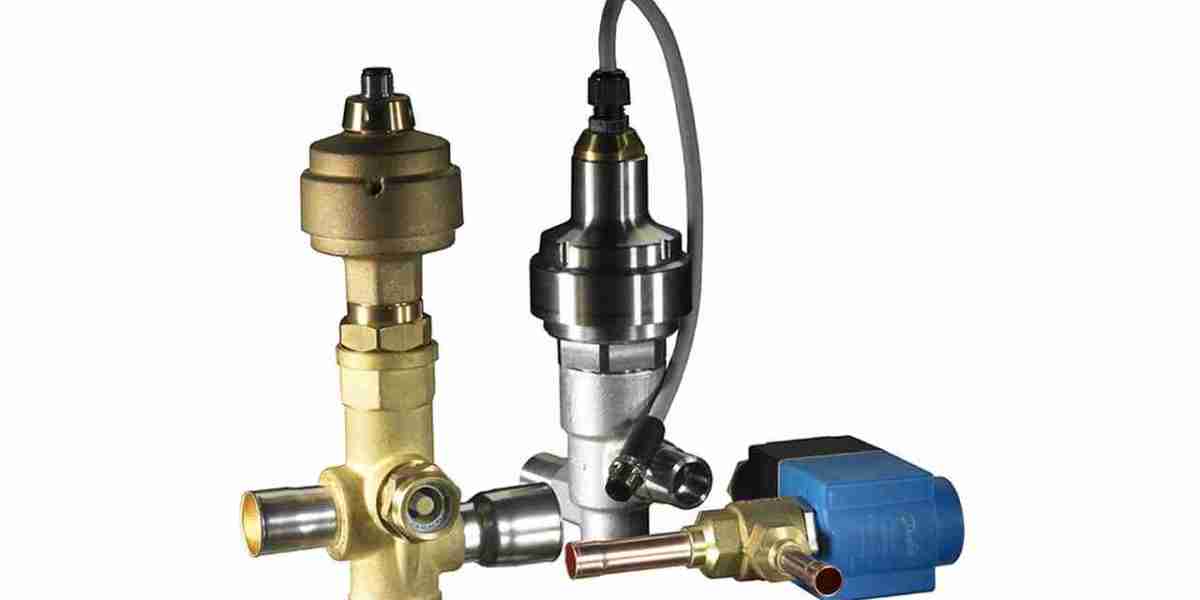The electronic expansion valves (EEVs) market is witnessing significant growth, driven by a mix of technological advancements, environmental regulations, and shifting industry demands. As a crucial component in modern HVACR (Heating, Ventilation, Air Conditioning, and Refrigeration) systems, EEVs are increasingly recognized for their ability to offer precise, energy-efficient control over refrigerant flow, particularly in applications requiring variable cooling and heating capacities.
In this blog post, we will explore the key market dynamics influencing the electronic expansion valves industry, shedding light on the factors that drive growth, technological innovation, and evolving market trends.
1. Environmental Regulations and Sustainability Goals
One of the most powerful forces shaping the electronic expansion valves market is the global emphasis on environmental sustainability. The push for lower global warming potential (GWP) refrigerants and the need for energy-efficient systems are driving industries toward adopting advanced solutions like electronic expansion valves.
As the world moves to phase out high-GWP refrigerants under agreements like the Kigali Amendment to the Montreal Protocol, EEVs have become an essential component in facilitating the use of eco-friendly alternatives like R-32, CO₂, and natural refrigerants (e.g., ammonia and hydrocarbons). EEVs are ideal for systems using these refrigerants because they require more precise control over refrigerant flow to maintain energy efficiency and safe operation.
2. Technological Advancements and Integration with Smart Systems
The growth of smart technologies and Internet of Things (IoT) capabilities in HVACR systems is another key dynamic influencing the EEV market. As buildings, factories, and residential units adopt more intelligent, automated systems, the need for real-time system optimization becomes critical. EEVs, with their electronic control mechanisms, are well-positioned to meet this demand.
Smart HVAC systems can now gather data from a network of sensors, making it possible to remotely monitor, control, and optimize performance based on environmental conditions. EEVs allow for automatic adjustments to refrigerant flow based on real-time data, improving overall system efficiency, reducing operational costs, and enhancing comfort levels.
The integration of artificial intelligence (AI) and machine learning into HVACR systems further amplifies the benefits of EEVs. These technologies can predict system performance, identify potential issues before they occur, and make adaptive changes to optimize system functioning, enhancing both the longevity and performance of HVACR systems.
3. Energy Efficiency and Cost-Saving Potential
Energy efficiency is a major driver of the EEV market, with businesses, municipalities, and residential customers all seeking ways to reduce energy costs. EEVs enable variable refrigerant flow, allowing systems to adjust dynamically to changes in cooling or heating demand. This flexibility leads to significant energy savings, particularly in large-scale commercial and industrial applications where energy consumption is a primary concern.
By adjusting refrigerant flow in real-time, EEVs prevent overcooling or overheating, which not only improves energy efficiency but also enhances the lifespan of the entire HVACR system. The need to meet both environmental and economic objectives is pushing businesses to embrace EEVs to reduce operational costs and meet energy efficiency targets.
4. Increased Adoption in Industrial Refrigeration and Cold Chain Logistics
Another important dynamic in the EEV market is the increasing demand for industrial refrigeration and cold chain logistics. These sectors require highly efficient and reliable systems to maintain precise temperature control in applications such as food storage, pharmaceuticals, and medical supply transport. EEVs are particularly beneficial in these industries due to their ability to maintain stable temperatures even in fluctuating load conditions, reducing energy consumption while ensuring product safety and quality.
With the growth of e-commerce and global supply chains, cold storage and transportation are critical components of the global economy. The increasing demand for refrigerated transport and storage is, therefore, boosting the adoption of advanced refrigeration technologies like EEVs.
5. Cost Considerations and Market Challenges
Despite their clear benefits, cost remains a key challenge for the broader adoption of EEVs, particularly in price-sensitive markets. EEVs are more expensive than traditional mechanical valves, and their installation and maintenance can be more complex due to the need for electronic control systems and specialized knowledge. For businesses in emerging markets or smaller commercial enterprises, the initial investment in EEV technology can be a significant barrier.
However, as production volumes increase and technology matures, the cost of EEVs is expected to decrease. Additionally, the growing awareness of the long-term savings achieved through energy-efficient systems is helping justify the higher upfront cost for many customers.
6. Regional Market Dynamics
Regional dynamics also play a crucial role in shaping the EEV market. Asia-Pacific is expected to continue leading the market due to rapid urbanization, high demand for air conditioning, and substantial industrial growth in countries like China and India. North America and Europe also present strong markets, especially as countries in these regions pursue energy efficiency goals and implement stricter environmental regulations.
Emerging markets in Latin America and the Middle East are also beginning to adopt more efficient refrigeration and air conditioning technologies, contributing to the growing demand for EEVs in these regions.
Conclusion: Navigating the EEV Market Dynamics
The electronic expansion valves market is driven by a combination of technological advancements, environmental pressures, and the global demand for energy-efficient systems. As HVACR systems become smarter, more eco-friendly, and capable of adapting to dynamic conditions, EEVs are becoming increasingly critical in optimizing performance and reducing energy consumption.
For manufacturers and stakeholders in the HVACR sector, understanding the key market dynamics from regulatory changes to technological innovations is crucial for staying competitive. The EEV market is expected to continue expanding, offering numerous opportunities for growth, particularly in industrial applications, smart systems, and regions focused on sustainability.




